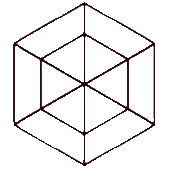A Brief Note on the Fundamental Virtuality of Worlds
“Philosophy is a theory of multiplicities” writes Deleuze in his Dialogues, and continues saying that each multiplicity “is composed of virtual and actual elements”1. Becomings, events and worlds are multiplicities; all things that incarnate the Idea are multiplicities, and all of them have their virtual and their actual ontological moments. In this note we will focus on the notion of world, to this very peculiar multiplicity, that seems so obviously unified and at hand in respect to our everyday experience, yet rises so many philosophical questions. The hypothesis that will run our examination of the ontological status of worlds, subsists in a claim that worlds are fundamentally virtual, that they never fully reach their actuality (on the contrary to objects, which become actual even if the “cloud of virtuality” always keeps surrounding them), thus remaining somehow in the bergsonian pure past. Worlds are archives that never cease to reorganise themselves, and their timely/virtual/intensive modality is, against all odds, more ontologically fundamental, then the spatial/actual/extensive one. In order to speak about the virtuality of worlds, we must start by mapping some general meanings of the notion of “world”.
What do we mean when we speak about “worlds”?
The etymological and semantic sedimentation of the notion of world, that has built up in numerous untranslatable regions and layers across Indo-European languages, is disclosing an abundant multiplicity of meanings. The very richness of the soil of its fields of sense, is found however in its fundamental undecidability. The Indo-European notional ground of the “world” is an unstable one, a true landslide, with its depths full of cracks and subterranean waters. For example, the Anglo-Saxon “world” and the German “Welt”, both share etymological meanings such as “human existence” and “age of men”. This particular worldly ground seems to be somehow exclusively fertile in terms of humanity – denoting thus an anthropogenetic world per se. A world as the source of possibility and the locus of actuality, predestined for culture, civilization and humanity2; a world where time is at disposition of “men”. On the other hand, or on the other side of the linguistic crack, the french word “monde” derives from latin “mundus”, meaning “something arranged, distinct and pure”. This “something” is to be understood as universe (rather than earth3), a whole which offers itself as a tidy container of all things that are disclosed to the human perception, in what seems to be a “natural order”. This becomes clearer once we observe that the meanings of latin mundus are inherited from the Ancient Greek “κόσμος”: “The kosmos is produced in the fragment 30 of Heraclitus [as measures of kindling and measures of going out of the ever-living Fire], and installed definitely and unambiguously in the sense of “world” [“monde”] by Plato’s Timaeus [as order and beauty, described in Plato’s cosmology that lays foundations not only for a peculiar understanding of the physical world and its origin, but also for an epistemology and an ideal political conception of the polis.]4. The original meanings of order and beauty will stay deeply rooted in the french word “monde”. Beaudlaire, in its Invitation to the voyage will add to them also the ideas of “luxury, calm and voluptuousness”, rendering this specific conception of the world (somewhat cynically), as an inherently utopian one. Slavic languages propose yet another understanding of the world. The word “svet” has a primary meaning which is “light”, while the meaning “world”, as well as “sacred” and “saint”, come only as secondary ones. The (slavic) world is thus “a space on an open light”, where “to be is to be at light”. Strongly influenced by Orthodox theology, the word “svet” will perpetuate (in spite of some linguistic inconsistencies) certain ideas that we find in the semantic field of kosmos, while notably replacing Plato’s demiurge with God, via the “element of light [which] is itself the divinity that tolerates no obscurity, impurity or (according to later meaning) sin”5. Russian language presents an exception amongst slavic languages when it comes to the notion of world, as it uses the word “mir”, which stands both for “world” and “peace”6, a literary fruitful indistinction for which we will satisfy ourselves only to indicate it.
Let’s stop here with our etymological mapping of the notion of world. World, Welt, monde, mundus, κόσμος, svet, mir – all those words pretend to denote the same something (something that is presumably more than a thing, something in which all things dwell, but still something), yet they show some very different etymological properties. We will not strive here to attain some kind of benjaminian pure language7 that would take into account all those meanings, with an only goal to reduce them to a simple unity. It will be sufficient for our aims to point out some of the common formal grounds they share. All the Indo-European linguistic conceptions of the world mentioned here, tend to impose an idea of the world as a whole, a totality which is non-mathematically infinite and has no alternative. Following that logic, surges also the premise that there is only one possible world, which is also the only actual one (with and against Aristotle). Furthermore, and rather paradoxically, they all also express quasi utopian images of the world as something that is perfect, unchangeable and eternal. Finally, they are pretending, each one in its specific manner, to propose that their own conception of the world is the only one that is reflecting objectively the true state of affairs, the real world (even when they do not take a realist, but rather a humanist standpoint, as in “human existence” or “age of men”). A critique of these linguistic conceptions of the world that one could formulate from the standpoint of the fundamental virtuality of worlds, is that the real of the “real world” which they promote, is built exclusively with and against the Aristotelian binary opposition between the actual and the potential8, which is referring mainly to the being of things – thus completely missing, as we will see further on, the virtual aspects of the worlds. The confusion between objects and worlds is common to all common semantic fields of our exemplary words. The different interpretations of the real world, each one claiming to be the one and only that is truthful and trustworthy, are discredited by the mere fact of their multiplicity and coexistence. Their reality is thus proven to be purely subjective, and their uniqueness dissolved in their complex correlations. One has just to think about the world of art, the world of mathematics, the animal world, the intelligible world, the world of illusions or any other world that one could enumerate, to start grasping that the World is a multiplicity that has no prior unity and never results in an actual whole. Rather, if we use the deleuzian vocabulary, we could state that the World could be considered as an extensive multiplicity that can be divided to parts without changing in nature, while the worlds are intensive multiplicities – where any alteration “means a total change in its nature – a change in its intensive state”9. Both of those facets of the multiplicity which we call “world” are fundamentally virtual. The worlds are virtual multiplicities that form “something like the real openness to change that inheres in every particular situation”10.
Even if this definition seems satisfying, what is that something that reappears to describe the worlds? Here we encounter Deleuze’s theoretical archenemy, Hegel, for whom something is an existent, a determinate being, the first negation of negation11. If the world is a determinate being, what is happening with the becoming of worlds? It is always already over. And this is a position that Deleuze criticises when insisting on the becoming, on repetition and difference. We will say on our part therefore that World could be seen an extensive virtual multiplicity whose becoming leaves us rather indifferent, and that worlds, as intensive virtual multiplicities, are the modal statuses through which the constant becoming of state of affairs is producing the worldliness of worlds, without ever actualising itself. Worlds do not exist, they fundamentally insist, and in some sense, subsist.
What do we mean when we speak about the “virtual” and why worlds are fundamentally virtual?
In the last few decades, the word “virtual” has been tightly associated with digital technologies – describing the “nature” of cyberspaces, platforms, networks, etc. Appearing most often in its adjective form, the virtual became practically indissociable from the substantive noun reality, forming thus the concept of virtual reality that will address a whole span of digital phenomena. Through this semantic encounter of virtual and real in the context of digital, both of these technical terms inherited from western metaphysics and/or ontology, will obtain new unexpected predominant meanings. The word “virtual”, will quite unjustifiably become synonymous with “artificial”, meant as “illusionary”12. We could go on saying that this reduction of sense will also relate the virtual to the “perceptible” and above all “visual”, to a manufactured “alternative” and “secondary” mode of perceptible substance, that offers itself on demand, awaiting to be experienced. The existence of the virtual (a characterisation which is altogether wrong in the first place, as we are claiming above) will thus become totally dependent on the mind that perceives it – in a rather vulgarised kantian manner. The word “reality”, on the other hand, will become a synonym of “interactive immersive environment”13. This “reality” thus becomes a predominantly spatial formation, while the question of “real” presupposes necessarily some kind of a digital remake of the derridean “ethics of presence”14. The conceptual unity of such virtual and such real, as it still appears to our contemporary common-sensical understanding, will often result in what Deleuze calls badly analysed mixes, which raise numerous false problematics15. The most blatant example of these badly analysed mixes resides in the notion of virtual worlds, that will succeed somehow the one of virtual reality, as its fully accomplished, final (and finite) version. In this sense, virtual worlds represent a mere product of human agency, of its technological artifice, designed to be represented right back to human minds. A theatre of a sort. The man thus becomes some kind of a weak demiurge, a world-creating instance that brings to existence worldly spaces, that produces worldliness which is not physical, but digital, which is “not concrete”, but “purely abstract”, and yet perceivable to our senses. While this definition doesn’t seem shocking in respect to our common sense and follows somehow our daily experience of the so-called virtual worlds (be that social networks or World of Warcraft), it also raises a certain number of contradictions that deserve to be philosophically reexamined. All ready-made answers that the mainstream discourses on our digital condition offer us about the virtual, the reality and the world, seem to be at least theoretically problematic. Even more so, they seem deceitful in so many ways. That’s why in order to grasp the virtuality of worlds, one has to go back to philosophy.
As in the digital context, in philosophy, the virtual and the real are tightly connected. Although, in philosophy we risk to encounter more considerations about the reality of the virtual, than about the virtual reality. “In Deleuze’s ontology, the virtual and the actual are two mutually exclusive, yet jointly sufficient, characterisations of the real” and “the virtual/real are incorporeal events and singularities on a plane of consistency, belonging to the pure past – the past that can never be fully present” while “the actual/real are states of affairs, bodies, bodily mixtures and individuals”16. The relation between actual and virtual in Deleuze’s philosophy is inspired by different thinkers, such as Duns Scotus, Henri Bergson, Baruch Spinoza or Friedrich Nietzsche. The rich and complex set of relations that those two modes of reality are forming, gives Deleuze the foundation on which he explains his central ontological notion of becoming. Becoming is “the movement from an actualised state of affairs, through a dynamic field of virtual/real tendencies, to the actualisation of this field in a new state of affairs”17. This movement is, of course, a movement in time, rather than in space; it is a non-linear movement that leads from the foundations to what is being founded and back. The virtual pertains to the pure past, a past that was never present, that has never appeared, and that makes the actualisation possible, influences formally its outcomes, without ever actualizing itself. To define virtuality, Deleuze compares it (in Bergsonisme) with memory, in its ontological, rather than its psychological sense. He speaks precisely about the pure memory18, one that has never existed psychologically, but keeps on insisting ontologically. In this manner, Deleuze’s virtuality resembles to Derrida’s concept of trace, which do not presuppose some kind of past which would be a modified presence, but an absolute past, a différance which differs all things19 – insistently.
Yet the deleuzian understanding of the virtual seems to be insufficient in respect to an analyses of the ontological status of worlds, because its focus seems to be primarily aiming objects and events, however abstract they were. Still, in Dialogues there is a passage that offer us a hint which could facilitate the understanding of the fundamental virtuality of worlds: “Each actual [object] surrounds itself with circles of virtualities always renewed, where each circle emits another, and they all englobe and react on the actual (“in the center of the cloud of virtual is another virtual of a higher order… every virtual particle is surrounded by its virtual cosmos, and each one in its time does the same indefinitely”)20. Here, circles of virtualities may be understood as worlds. Worlds “surround” objects without providing a container in which those objects would dwell, they surround them paradoxically from the inside. They “surround” them temporally, not spatialy. The infinite multiplicity of their inversely expanding strata forms in their ability to last without appearing, in their duration, rather than in their environmental character. Worlds are fundamentally virtual because they serve to archive actual objects, giving them ontological (non-linear) commencement and commandment (following the double meaning of the Ancient greek word arché), which is necessary for their ontogenesis, for their coming into being. And still, once those actual objects are, once they exist and are actualized, they will never cease to change, in consequence of a mere fact that they are archived in the virtuality of worlds. Each reappearance of something actual will come with a change in quality, that will be nothing else but a result of the intensive character of the virtual worlds to which they belong. The reality of the virtual is to be found in its insistence, in an ephemeral archival organisation that comes from within the very movement of time. Worlds are fundamentally virtual because they insist in their being-absent, they remain beyond the reach of sensible perception, yet organize all perceptible objects, shape their differences and give rise to their actualization. In their virtuality, they are differently, yet equally real as actual objects.
References
1 Gilles Deleuze; Claire Parnet, Dialogues (Paris : Flammarion,1996), p. 179. [My translation from french.]
2 The words “culture”, “civilisation” and “humanity” are left here on purpose in their singular form, to underline the deeply rooted presumption of the Anglo-Saxon, but also generally western, understanding of those concepts as universal.
3 For “earth”, Latin language has a more common term: “orbis terrarum”.
4 Barbara Cassin, Vocabulaire européen des philosophies (Paris : Seuil/Le Robert), 2004, p. 1391.
5 Ibid., p. 1260.
6 Ibid., pp. 803–808.
7 See “The Task of the Translator” in Walter Benjamin, Selected Writings, Volume 1, 1913–1926 (Cambridge, MA : The Belknap Press of Harvard University Press), 1996.
8 See Book Θ in Aristotle, Metaphysics (Cambridge MA : Hackett Publishing), 2016.
9 Johnatan Roffe, “Multiplicity” in Adrian Parr (Ed.), Deleuze Dictionary (Edinburgh : Edinburgh University Press), 2010, p. 181.
10 Ibid. [My italics.]
11 Georg Wilhelm Friedrich Hegel, Science of Logic (Cambridge : Cambridge University Press), 2010, p. 88.
12 Brian Massumi, “Envisioning the Virtual” in Mark Grimshaw (Ed.), The Oxford Handbook of Virtuality (Oxford : Oxford University Press), 2013, p. 55.
13 Ibid. [My italics.]
14 See Jacques Derrida, Of Grammatology (Baltimore : Johns Hopkins University Press), 1998.
15 Gilles Deleuze, Le bergsonisme (Paris : Presse Universitaires de France), 2004, p. 48.
16 Constantin V. Boundas, “Virtual/Virtuality” in Adrian Parr (Ed.), Deleuze Dictionary (Edinburgh : Edinburgh University Press), 2010, p. 300.
17 Ibid.
18 Gilles Deleuze, Op. cit., p. 50.
19 Jacques Derrida, Op. cit., p. 97.
20 Gilles Deleuze, Claire Parnet, Dialogues (Paris : Flammarion), 1997, p. 179. [My italics, my translation from french.]
Bibliography
Aristotle, Metaphysics (Cambridge MA : Hackett Publishing), 2016.
Benjamin, W., “The task of the Translator” inWalter Benjamin, Selected Writings, Volume 1, 1913–1926 (Cambridge, MA : The Belknap Press of Harvard University Press), 1996.
Cassin, B., Vocabulaire européen des philosophies (Paris : Seuil/Le Robert), 2004.
Deleuze, G., Le bergsonisme (Paris : Presse Universitaires de France), 2004.
Deleuze, G., Parnet, C. Dialogues (Paris : Flammarion), 1997.
Derrida, J., Of Grammatology (Baltimore : Johns Hopkins University Press), 1998.
Grimshaw, M. (Ed.), The Oxford Handbook of Virtuality (Oxford : Oxford University Press), 2013.
Hegel, G.W.F., Science of Logic (Cambridge : Cambridge University Press), 2010.
Parr, A. (Ed.), Deleuze Dictionary (Edinburgh : Edinburgh University Press), 2010.






